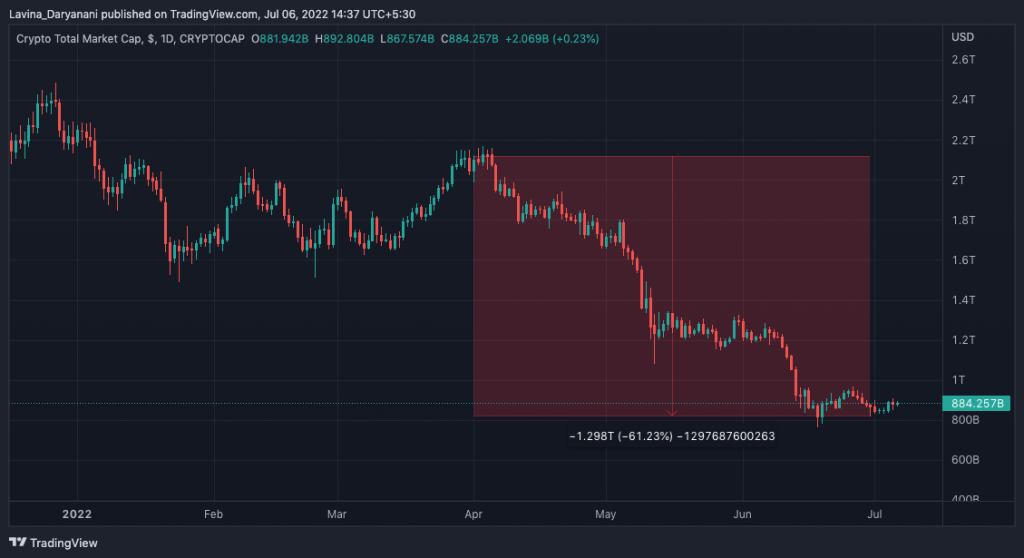Q2 2022 was perhaps the most dramatic quarter the crypto space has ever seen. The market saw everything from well-established projects losing ground and collapsing to Bitcoin and altcoins tumbling to historic lows.
Since November last year, the market capitalization of all cryptos dropped from a peak of $3T to under $1T. Well, the crypto markets have been volatile since inception, and such a dip was not something unusual. A recent Coinbase analysis highlighted that since 2010, the total crypto market cap experienced a quarterly decline of 20% or more nine times.
The scars
The dent this time was, undeniably, quite serious. From trading a high of $2.15 trillion on day 1 of Q2, the global crypto market cap was at a low of $816 billion on the last day. The state of affairs worsened in May when Terra’s tokens LUNA and UST sunk.


So, has the market been losing its efficiency owing to the said dip? Let’s delve a little into the past to cater to that question.
From June 2017 to June 2022, the crypto market cap rose by 860%. The growth of various sub-industries—from dApps, and DAOs to NFTs—has contributed to the overall rise in adoption. The same has aided in elevating the market value of the assets.
Coinbase asserted that the outlook about cryptos today is much brighter than it was during the initial days. In fact, despite being in a bear market, Bitcoin and its network’s adoption numbers have only been notching up. The same was highlighted in one of our recent analyses.
Read More: Bitcoin investors, cheer up! Never before in the history has THIS happened
Alongside, it is crucial to note that since 2020, the correlation between the stock and crypto-assets has recorded a macro incline. On the contrary, during the first decade of its existence, BTC returns were, on average, uncorrelated with the stock market’s performance. Coinbase noted,
“This suggests that the market expects crypto assets to become more and more intertwined with the rest of the financial system, and thus to be exposed to the same macro-economic forces that move the world economy.”


Read More: Have Bitcoin and S&P 500 broken up?
Should Bitcoin blame itself for the collapse?
Before jumping to a conclusion, it is essential to differentiate how much of the current decline is due to worsening macroeconomic conditions. And to what extent crypto is solely responsible for its downfall.
Zooming out more revealed that the crypto market cap declined over 57% year-to-date in 2022. At the same time, the S&P 500 fell by 19%. Per Coinbase’s analysis, if only macro-economic conditions dragged Bitcoin’s price down, the losses would have been capped at 38%.
“We can thus roughly estimate that two-thirds of the recent decline in crypto prices can be attributed to macro factors, and one-third to a weakening of the outlook solely for cryptocurrencies.”
The report highlighted that the market is witnessing something congruent to what it caught in the dot-com recession phase.
Read More: Is this Crypto’s Dot.com moment?
As far as the future is concerned, Coinbase highlighted that only a change in the outlook would be able to instigate a recovery.
“… according to the market-efficiency view of crypto markets, only changes in the outlook of the crypto industry relative to what is already expected will bring changes to prices.”





